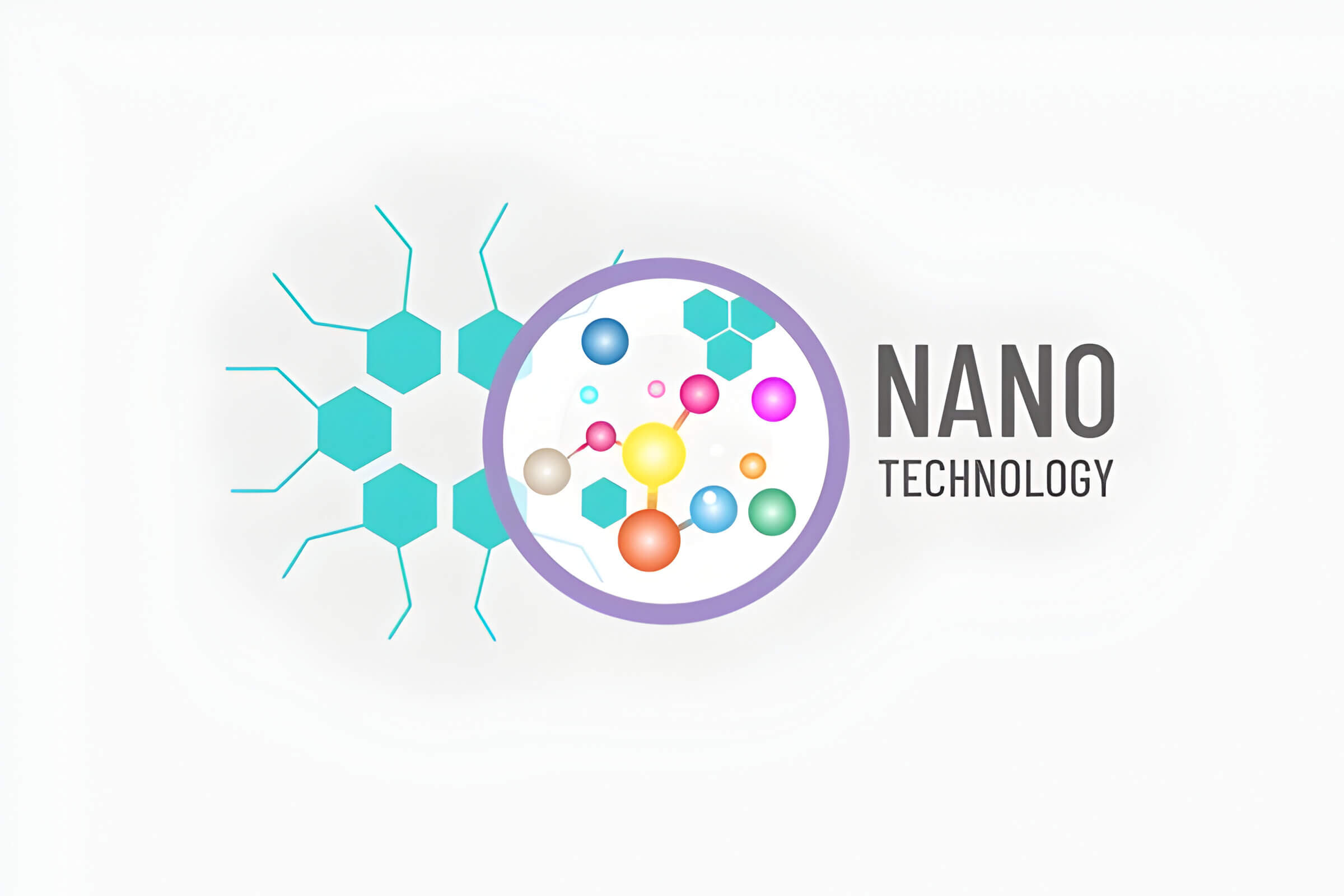Nanotechnology is a revolutionary field that manipulates matter at the atomic and molecular level. This discipline has the potential to transform industries and reshape our world. From its mid-20th century origins to current applications in medicine, electronics, and environmental science, nanotechnology continues to expand possibilities. We’ll explore its history, principles, applications, and future prospects.
Understanding the Basics of Nanotechnology
Nanotechnology is a cutting-edge field that operates at the nanoscale, typically dealing with structures between 1 and 100 nanometers in size. This revolutionary science involves molecular engineering and atomic-level manipulation to create materials and devices with unique properties. At its core, nanotechnology focuses on understanding and controlling matter at dimensions where unusual physical, chemical, and biological properties emerge.
One of the key aspects of nanotechnology is the creation and use of nanoparticles. These tiny particles exhibit different behaviors compared to their larger counterparts due to their increased surface area-to-volume ratio. Nanomaterials, which are materials with at least one dimension in the nanoscale, can possess extraordinary strength, electrical conductivity, and optical properties.
The applications of nanotechnology are vast and diverse, spanning industries such as medicine, electronics, energy, and environmental science. From targeted drug delivery systems to more efficient solar panels, the potential of atomic-level manipulation is reshaping our technological landscape. As research in this field continues to advance, we can expect nanotechnology to play an increasingly significant role in solving global challenges and driving innovation across various sectors.
The History and Evolution of Nanotechnology
Nanotechnology, the manipulation of matter at the atomic and molecular scale, has a rich history dating back to the mid-20th century. The concept was first introduced by physicist Richard Feynman in his famous 1959 lecture, “There’s Plenty of Room at the Bottom,” where he envisioned the possibility of manipulating individual atoms.
The term “nanotechnology” itself was coined in 1974 by Norio Taniguchi, but it wasn’t until the 1980s that the field began to gain significant traction. Key milestones in the nanotech timeline include the invention of the scanning tunneling microscope in 1981, which allowed scientists to visualize individual atoms for the first time, and the discovery of fullerenes in 1985, which opened up new possibilities for nanoscale materials.
Throughout the 1990s and 2000s, nanotechnology saw rapid advancements in various fields, including electronics, medicine, and materials science. The development of carbon nanotubes, quantum dots, and nanoparticles for drug delivery marked significant technological breakthroughs.
Today, nanotechnology continues to evolve, with researchers exploring applications in areas such as energy storage, environmental remediation, and artificial intelligence. As we look to the future, the potential of nanotechnology to revolutionize numerous industries remains vast and largely untapped.
How Nanotechnology Works
Nanotechnology operates on two fundamental approaches: bottom-up and top-down. The bottom-up approach involves building nanostructures atom by atom or molecule by molecule, often utilizing self-assembly techniques. This method allows for precise control over the final product’s composition and structure. On the other hand, the top-down approach starts with larger materials and reduces them to nanoscale dimensions through various nanofabrication processes.
One of the key principles in nanotechnology is self-assembly, where molecules or atoms spontaneously arrange themselves into ordered structures. This natural phenomenon is harnessed to create complex nanostructures with minimal external intervention. Nanofabrication techniques, such as lithography and etching, are employed to manipulate materials at the nanoscale, enabling the creation of intricate patterns and devices.
Scanning probe microscopy plays a crucial role in nanotechnology, allowing scientists to visualize and manipulate individual atoms and molecules. Techniques like atomic force microscopy (AFM) and scanning tunneling microscopy (STM) provide unprecedented insight into the nanoscale world, facilitating both research and development of new nanomaterials and devices.
By combining these principles and techniques, nanotechnology continues to advance, offering potential breakthroughs in fields ranging from medicine and electronics to energy and environmental science.
Applications of Nanotechnology Across Various Industries
Nanotechnology, the manipulation of matter at the atomic and molecular scale, has revolutionized numerous industries with its wide-ranging applications. In medicine and healthcare, nanoparticles are being used for targeted drug delivery, enhancing diagnostic imaging, and developing more effective treatments for diseases like cancer. The electronics industry has benefited from nanotechnology through the creation of smaller, faster, and more energy-efficient devices, including advanced semiconductors and high-capacity data storage systems.
In the energy sector, nanotechnology is driving innovations in solar cells, improving their efficiency and reducing costs. It’s also contributing to the development of more powerful and longer-lasting batteries. Environmental scientists are leveraging nanotech for water purification, air filtration, and the remediation of polluted sites. In materials science, researchers are creating stronger, lighter, and more durable materials with enhanced properties, such as self-healing capabilities or improved thermal conductivity.
The aerospace industry is also reaping the benefits of nanotechnology, with applications in lightweight composite materials for aircraft and spacecraft, as well as advanced sensors and coatings that improve performance and safety. As research in nanotechnology continues to advance, we can expect even more groundbreaking applications across these and other industries, potentially transforming various aspects of our daily lives and technological capabilities.
The Importance of Nanotechnology in Modern Science
Nanotechnology has emerged as a cornerstone of modern scientific research, driving breakthroughs across multiple disciplines. This interdisciplinary field combines physics, chemistry, biology, and engineering to manipulate matter at the atomic and molecular scale. By working at such minute levels, scientists can create materials and devices with enhanced properties and improved efficiency.
One of the most significant impacts of nanotechnology is in the area of miniaturization. As devices become smaller and more powerful, they open up new possibilities in fields like electronics, medicine, and energy production. For instance, nanotech has enabled the development of more efficient solar cells, targeted drug delivery systems, and ultra-compact computer components.
The enhanced properties of nanomaterials have led to innovations in various industries. Stronger and lighter materials are revolutionizing construction and transportation, while nanoparticles are improving the effectiveness of cosmetics and sunscreens. In medicine, nanotech is paving the way for more precise diagnostic tools and personalized treatments.
As research in nanotechnology continues to advance, we can expect even more groundbreaking applications that will shape the future of science and technology. The potential for nanotechnology to address global challenges, from clean energy to disease prevention, underscores its critical importance in modern scientific endeavors.
Nanotechnology’s Impact on Medicine and Healthcare

Nanotechnology is revolutionizing medicine and healthcare, offering groundbreaking solutions to longstanding challenges. One of the most promising applications is targeted drug delivery, where nanoparticles can transport medications directly to diseased cells, minimizing side effects and improving treatment efficacy. This approach has shown particular promise in cancer treatment, allowing for more precise and less invasive therapies.
In diagnostics, nanotechnology enables the development of highly sensitive and specific tests that can detect diseases at earlier stages. These advancements lead to more accurate diagnoses and better patient outcomes. Tissue engineering also benefits from nanotechnology, with researchers using nanomaterials to create scaffolds that support the growth of new tissues and organs.
Perhaps one of the most exciting prospects is the development of nanorobots in medicine. These microscopic machines could potentially navigate through the human body, performing tasks such as removing plaque from arteries or delivering targeted treatments. While still in early stages, nanorobots represent a future where medical interventions become increasingly precise and minimally invasive.
As nanotechnology continues to advance, its impact on medicine and healthcare is expected to grow, potentially transforming patient care and treatment strategies across a wide range of medical fields.
Environmental Applications and Sustainability
As our world grapples with pressing environmental challenges, innovative technologies are emerging to address these issues head-on. Water purification techniques have advanced significantly, employing cutting-edge filtration systems and natural processes to provide clean drinking water to communities worldwide. Air pollution control measures have also seen remarkable progress, with the development of advanced scrubbers and catalytic converters that effectively reduce harmful emissions from industrial processes and vehicles.
Renewable energy sources continue to play a crucial role in the transition towards a sustainable future. Solar, wind, and hydroelectric power are becoming increasingly efficient and cost-effective, gradually reducing our dependence on fossil fuels. Additionally, the rise of eco-friendly materials in construction and manufacturing is helping to minimize environmental impact while maintaining product quality and performance.
Environmental remediation efforts are gaining traction, with scientists and engineers developing novel approaches to clean up contaminated sites and restore ecosystems. From bioremediation techniques that use microorganisms to break down pollutants, to phytoremediation methods that harness plants’ natural ability to absorb and process contaminants, these innovative solutions are helping to heal our planet.
As we continue to prioritize sustainability, the integration of these environmental applications will be crucial in creating a more resilient and eco-friendly world for future generations.
Challenges and Ethical Considerations in Nanotechnology
Nanotechnology, while promising groundbreaking advancements, also presents significant challenges and ethical considerations that must be addressed. Safety concerns are paramount, as the long-term effects of nanoparticles on human health and the environment remain largely unknown. Researchers are actively investigating potential risks, including the ability of nanoparticles to penetrate cell membranes and accumulate in organs.
The environmental impact of nanotechnology is another crucial area of concern. As nanomaterials become more prevalent in consumer products, questions arise about their fate in ecosystems and potential bioaccumulation in food chains. This uncertainty highlights the need for comprehensive life cycle assessments of nanomaterials.
Regulatory issues pose a significant challenge in the rapidly evolving field of nanotechnology. Governments and international bodies are working to develop appropriate frameworks to ensure the safe development and application of nanotechnologies. However, the unique properties of nanomaterials often require novel approaches to risk assessment and regulation.
The societal implications of nanotechnology are far-reaching, encompassing economic, legal, and ethical dimensions. As nanotechnology advances, it may exacerbate existing inequalities or create new ones, raising questions about access and distribution of benefits. Additionally, privacy concerns emerge as nanosensors become more sophisticated.
Nanoethics has emerged as a distinct field to address these complex issues. Ethicists, scientists, and policymakers are collaborating to develop guidelines for responsible research and development in nanotechnology. This interdisciplinary approach is crucial for balancing innovation with safety and ethical considerations, ensuring that nanotechnology’s potential is realized responsibly and sustainably.
The Future of Nanotechnology
Nanotechnology is poised to revolutionize numerous industries in the coming years, with several emerging trends and possibilities on the horizon. One of the most exciting developments is the integration of nanotechnology with quantum computing, which promises to create incredibly powerful and efficient computational systems at the nanoscale. This convergence could lead to unprecedented advancements in data processing and problem-solving capabilities.
Nanorobotics is another area of rapid growth, with researchers developing microscopic machines capable of performing intricate tasks at the cellular level. These nanorobots have immense potential in medicine, potentially revolutionizing drug delivery, cancer treatment, and even repairing damaged tissues.
Smart materials enhanced by nanotechnology are set to transform various sectors, from construction to consumer goods. These materials can change their properties in response to external stimuli, leading to self-healing structures, adaptive clothing, and more efficient energy storage systems.
The integration of artificial intelligence with nanotechnology is opening up new frontiers in materials science and manufacturing. AI algorithms can help design and optimize nanostructures, accelerating the development of novel materials with tailored properties.
Finally, nanotechnology is playing an increasingly crucial role in space exploration. Lightweight and durable nanomaterials can improve spacecraft design, while nanotech-based sensors and instruments can enhance our ability to study distant planets and celestial bodies. As these trends continue to evolve, nanotechnology will undoubtedly shape the future of science, technology, and human progress in profound ways.






